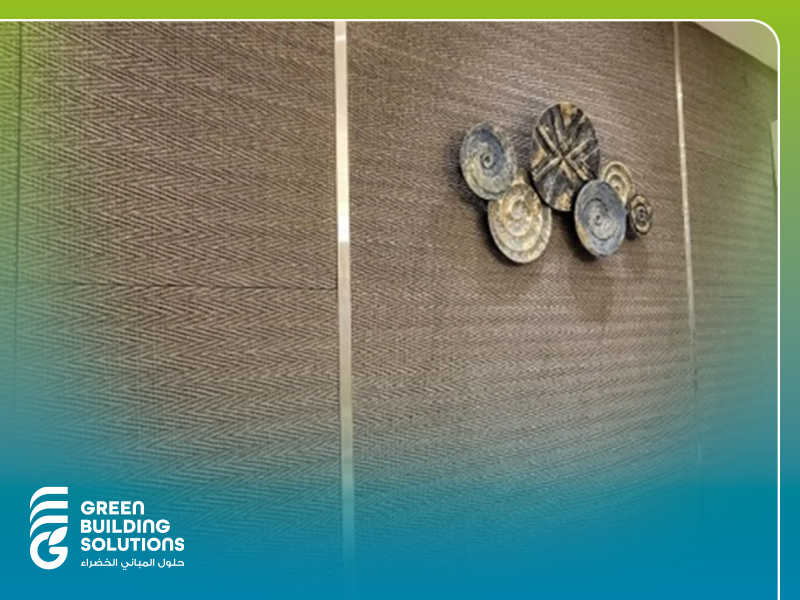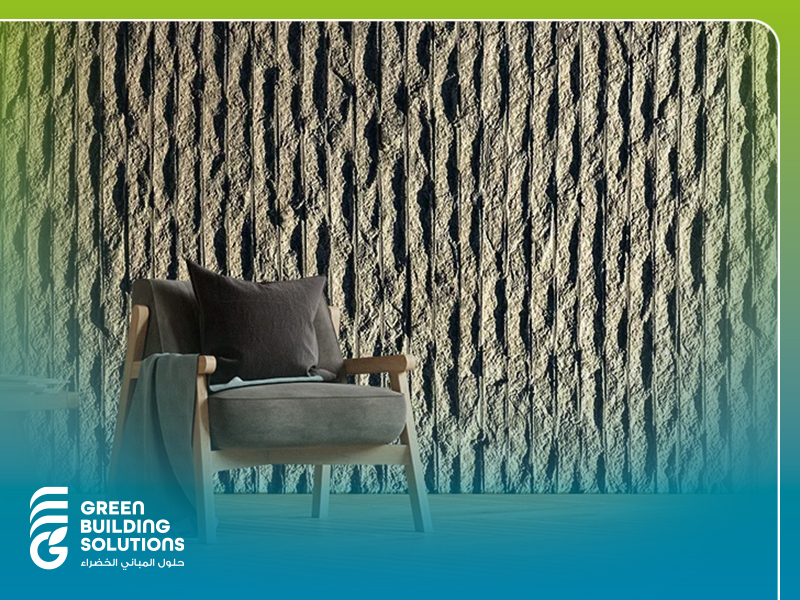Applications of Clay Panels in Exterior and Interior Design

In today’s construction industry, eco-friendly materials have become a focal point, with clay panels emerging as one of the most versatile and sustainable choices. Whether used for facades or interior design, clay panels are becoming increasingly popular due to their aesthetic appeal, energy efficiency, and sustainable properties. As part of Green Building Solutions for Energy-Efficient Projects, clay sheets offer significant advantages for modern architecture, especially when it comes to creating eco-friendly interior and exterior design solutions.
In this article, we will explore the applications of clay panels in both exterior and interior design and explain why these materials are favored by architects and builders. We will also cover the functional and aesthetic benefits of eco-friendly clay panels for sustainable architecture and give examples of real-world projects using this innovative material.
What Are Clay Sheets?

Clay sheets, also known as eco-friendly clay panels, are building materials made from natural clay that undergoes a treatment process to enhance durability and performance. These lightweight cladding materials offer an excellent alternative to traditional materials like stone and wood. Used extensively for both facade cladding and interior design, clay sheets are known for their insulating properties and aesthetic versatility.
Their natural composition makes them environmentally friendly, fitting perfectly within Green Building Solutions. The lightweight nature of clay sheets also contributes to easier installation, making them a preferred choice for professional installation of green building façade systems.
Why Are They Used in Facades and Interiors?
Clay sheets are utilized in both exterior facades and interior spaces for several reasons:
- Sustainability: Eco-friendly clay panels are made from natural, locally sourced materials and are highly recyclable, This makes them an ideal choice for sustainable building projects that focus on minimizing the environmental impact.
- Thermal Insulation: Clay is naturally heat-resistant, which makes clay panels for sustainable architecture perfect for facade cladding solutions in hot climates. They help regulate indoor temperatures and reduce energy consumption.
- Design Versatility: With a variety of textures, colors, and finishes, eco-friendly clay panels for sustainable architecture can be molded into different shapes to fit modern or traditional designs, providing architects with flexibility in their projects.
- Durability: Clay panels are long-lasting and highly resistant to wear and tear. They can withstand extreme weather conditions without deteriorating, making them suitable for both facades and interior applications.
Learn more about: PHOMI Clay Panels: The Complete 2025 Guide to Eco‑Friendly Wall Solutions
Key Applications in Exterior Facades
Clay sheets are particularly popular for use in exterior facades due to their aesthetic appeal, durability, and heat resistance. Here are some key applications of clay panels in exterior facades:
- Modern Facade Cladding: One of the primary applications of clay panels is as a facade cladding solution. These panels are ideal for creating visually striking and energy-efficient building exteriors. The lightweight cladding system ensures ease of installation while maintaining the building’s integrity and performance.
- Heat-Resistant Façade Cladding Solutions: Clay panels are perfect for hot climates due to their heat-resistant properties. In regions like Saudi Arabia, where buildings face extreme temperatures, clay sheets can help reduce the need for air conditioning by keeping the interior cooler, contributing to energy-efficient projects.
- Architectural Design: Clay sheets can be used to add depth and texture to a building’s exterior, offering a more contemporary or rustic look depending on the design needs. Their versatility makes them suitable for green building façade systems, blending aesthetics with functionality.
- Eco-Friendly and Sustainable Building Facades: As part of eco-friendly exterior design solutions, clay sheets provide a sustainable alternative to stone and wood cladding, contributing to the overall environmental goals of a project.
Read the full article on: Econiclay Display Panels by Green Building Solutions
Applications in Interior Design
The versatility of clay sheets extends beyond the exterior of a building to various interior applications, Here are some ways eco-friendly clay panels are being used inside buildings:
- Interior Walls: Clay panels are increasingly used for creating stylish, energy-efficient interior walls. Their natural insulation properties help to maintain temperature, making them ideal for both residential and commercial spaces that require energy efficiency.
- Columns: Clay panels can be applied to columns to add a refined aesthetic while benefiting from their insulating capabilities. This application is particularly useful in large open spaces like lobbies and conference rooms.
- Ceilings: The lightweight nature of clay sheets allows them to be used in ceilings as well, They provide an effective way to add texture and design to the ceiling while contributing to the overall sustainability of the space.
- Interior Decoration: In addition to functional applications, clay sheets also serve as beautiful interior design elements, Their ability to take on various colors and finishes allows for creative and personalized interiors, whether it’s for modern homes or upscale commercial spaces.
Get detailed insights on: How to Choose the Right Façade Material?
Aesthetic and Functional Benefits
The combination of aesthetic appeal and functionality is one of the main reasons why eco-friendly clay panels are gaining popularity. Here’s how clay sheets offer both aesthetic and functional benefits:
- Aesthetic Appeal:
Clay panels offer a timeless, natural look that can be customized to fit any design style. Whether you’re looking for sleek modern lines or a more rustic texture, eco-friendly clay panels for sustainable architecture can fulfill your design vision. - Sustainability:
With their eco-friendly composition and ability to be recycled, clay sheets align with the principles of green building solutions. This makes them a suitable choice for architects and developers who prioritize sustainability in their projects. - Energy Efficiency:
The natural insulation properties of clay sheets help regulate the internal temperature of buildings, reducing the need for energy-intensive cooling and heating systems. This contributes to the overall energy efficiency of the building. - Low Maintenance:
Unlike some materials, clay panels require minimal maintenance. Their durability and resistance to weathering mean they can maintain their appearance and functionality for years, reducing long-term upkeep costs.
Discover more about: Green Building Certifications: The Ultimate Guide to Sustainable Construction in 2025
Examples of Architectural Projects Using Clay Sheets

- Residential Homes:
Several modern residential projects in Saudi Arabia have adopted eco-friendly clay panels for both their exteriors and interiors. The panels help to create energy-efficient homes while maintaining a stylish, contemporary look. - Commercial Buildings:
In commercial developments, clay sheets have been used for both facade cladding and interior applications, offering aesthetic appeal and functionality. For instance, shopping malls and office buildings have embraced clay panels for sustainable architecture to reduce energy consumption while enhancing the building’s appearance. - Public and Institutional Buildings:
Clay panels are also used in institutional buildings like schools and hospitals, They help with thermal regulation and provide an inviting, eco-friendly atmosphere for both employees and visitors.
Find out more about: Top Green Building Solutions Provider in Saudi Arabia
FAQs about the Uses of Clay Sheets
- Are clay panels suitable for both exterior and interior use?
Yes, clay panels are versatile and can be used for both facade cladding and interior design applications, offering a seamless aesthetic across the entire building. - Do clay sheets offer good insulation?
Yes, eco-friendly clay panels have excellent insulation properties that help maintain the internal temperature of the building, contributing to energy savings. - Are clay panels environmentally friendly?
Yes, clay sheets are made from natural, recyclable materials and have a smaller carbon footprint compared to other construction materials like stone or wood. - How do clay panels compare to other materials in terms of cost?
Clay sheets are often more cost-effective than materials like natural stone, especially when considering their low maintenance and energy-saving benefits. - What installation services are available for clay panels, wood, and stone alternatives?
Professional installation services for clay panels, wood, and stone alternatives provide durable finishes, proper insulation, and sustainable solutions tailored for modern building needs. - What are the benefits of heat-resistant façade cladding solutions for hot climates?
Heat-resistant façade cladding solutions help reduce indoor temperatures, lower energy consumption, and extend building lifespan, making them ideal for hot and arid climates.
Clay panels offer a perfect balance of aesthetic beauty, functional benefits, and sustainability, making them an excellent choice for both exterior facades and interior design. As part of green building solutions, they not only enhance the visual appeal of a building but also contribute to energy efficiency and environmental responsibility.
If you’re looking to incorporate eco-friendly clay panels into your next project, GBS offers professional installation of green building façade systems. Contact us today to explore how we can help you create sustainable, energy-efficient buildings that stand out in both design and performance.
